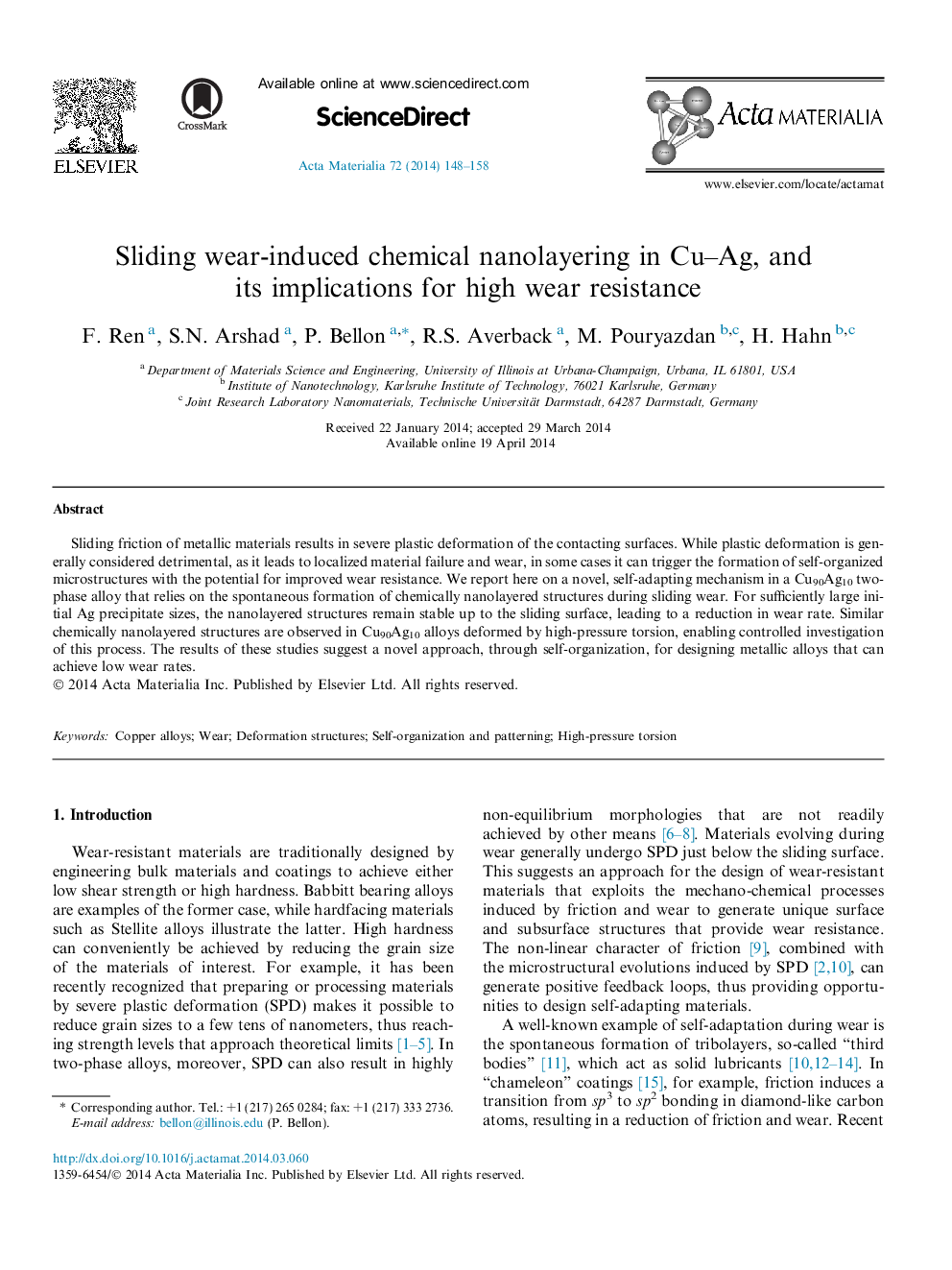| Article ID | Journal | Published Year | Pages | File Type |
|---|---|---|---|---|
| 7881862 | Acta Materialia | 2014 | 11 Pages |
Abstract
Sliding friction of metallic materials results in severe plastic deformation of the contacting surfaces. While plastic deformation is generally considered detrimental, as it leads to localized material failure and wear, in some cases it can trigger the formation of self-organized microstructures with the potential for improved wear resistance. We report here on a novel, self-adapting mechanism in a Cu90Ag10 two-phase alloy that relies on the spontaneous formation of chemically nanolayered structures during sliding wear. For sufficiently large initial Ag precipitate sizes, the nanolayered structures remain stable up to the sliding surface, leading to a reduction in wear rate. Similar chemically nanolayered structures are observed in Cu90Ag10 alloys deformed by high-pressure torsion, enabling controlled investigation of this process. The results of these studies suggest a novel approach, through self-organization, for designing metallic alloys that can achieve low wear rates.
Keywords
Related Topics
Physical Sciences and Engineering
Materials Science
Ceramics and Composites
Authors
F. Ren, S.N. Arshad, P. Bellon, R.S. Averback, M. Pouryazdan, H. Hahn,
